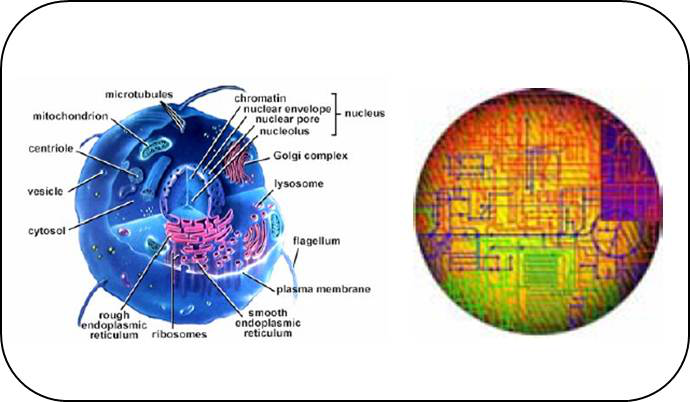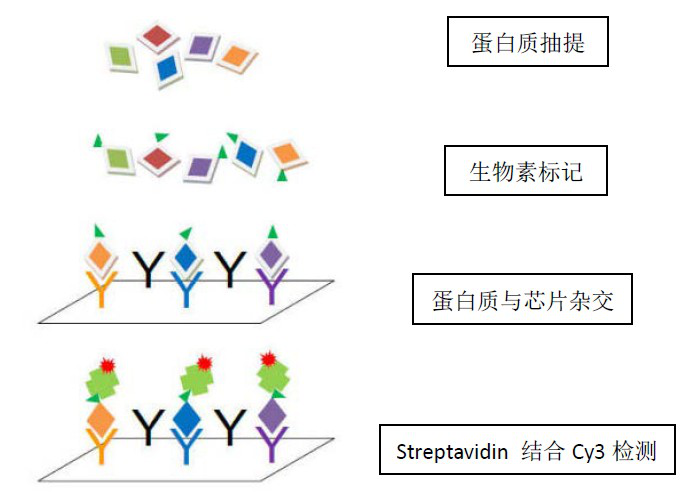43 signal pathways broad-spectrum antibody chip
Signal pathway phosphorylation broad spectrum screening antibody chip(PEX100)
From cell membrane, cytoplasm to nucleus, there are complex signal networks formed by multiple signal pathways cascading and crossing. This signal network transmits signals into cells through cascade amplification, decentralized regulation and other ways after cells are stimulated by extracellular stimuli, causing a series of comprehensive cellular responses. The emergence of a biological effect often involves simultaneous activation of multiple signal pathways. Reversible phosphorylation is the most common and energy-saving signal protein activation regulation mode in cells. Therefore, it is often the starting point of life science research to find the activated signal pathway and even the pathway protein with phosphorylation modulation。

The signal pathway phosphorylation broad-spectrum screening antibody chip (PEX100) uses 3D polymer membrane patented technology to high-density bind 1318 kinds of highly specific antibodies on the substrate, and detect 679 phosphorylation sites of 432 signal proteins respectively. These signal proteins are widely involved in many important signal transduction pathways. For each specific protein phosphorylation site, the chip sets a pair of antibodies to detect its phosphorylation (Phospho) and non phosphorylation (non Phospho) status respectively to improve the sensitivity and stability of phosphorylation detection. One chip experiment can realize simultaneous screening of multiple signal pathways and clear location of specific modulation sites, providing a clear research direction for further exploration of biological phenomena.
Features of antibody chip:
The chip size is 76 x 25 x 1 mm;
Complete screening of 31 signal channels;
Set 2 technical repetitions for each antibody;
Applicable to tissue, cell and other types of samples;
5 x106 cells, 200 μ G total protein content can satisfy the experiment;
Each detection site is provided with phosphorylated and non phosphorylated paired antibodies;
It can be used in multiple types of model biological detection such as human, mouse and rat;
Chip detection range:
| Signal path | Protein number | Signal path | Protein number |
MAPK signaling pathway | 67 | Regulation of actin cytoskeleton | 36 |
Erk signaling pathway | 59 | Jak-STAT signaling pathway | 32 |
Angiogenesis | 57 | AKT/PKB signaling pathway | 31 |
Focal adhesion | 56 | FGF signaling pathway | 29 |
Neurotrophin signling pathway | 52 | Endocytosis | 29 |
ErbB signaling pathway | 45 | Integrin signaling pathway | 29 |
AKT signaling pathway | 45 | VEGF signaling pathway | 27 |
Chemokine signaling pathway | 45 | Wnt signaling pathway | 26 |
PDGF signaling pathway | 43 | p53 signaling pathway | 25 |
T cell receptor signaling pathway | 43 | Adipocytokine signaling pathway | 19 |
Apoptosis signaling pathway | 41 | Calcium signaling pathway | 19 |
EGF receptor signaling pathway | 41 | Insulin/IGF pathway | 16 |
Insulin signaling pathway | 39 | mTOR signaling pathway | 16 |
CREB signaling pathway | 39 | TGF-beta signaling pathway | 13 |
Cell cycle | 37 | Interleukin signaling pathway | 37 |
Principle of antibody chip:


